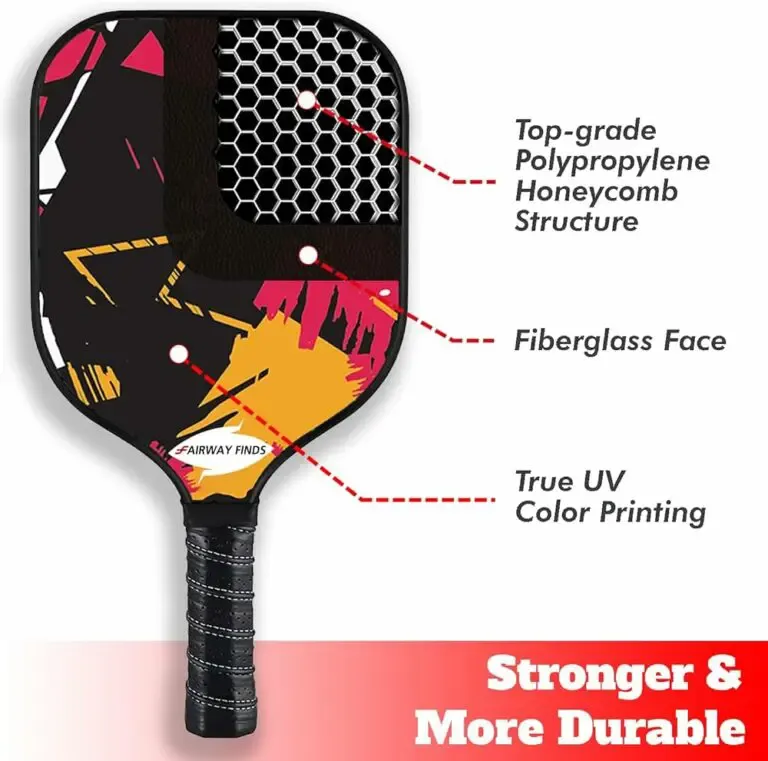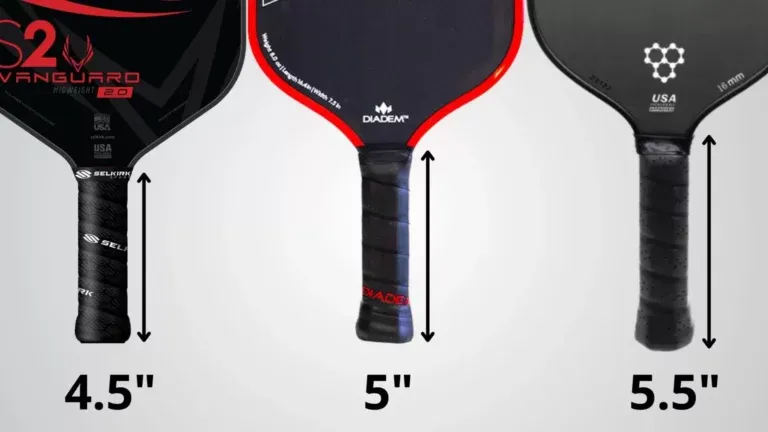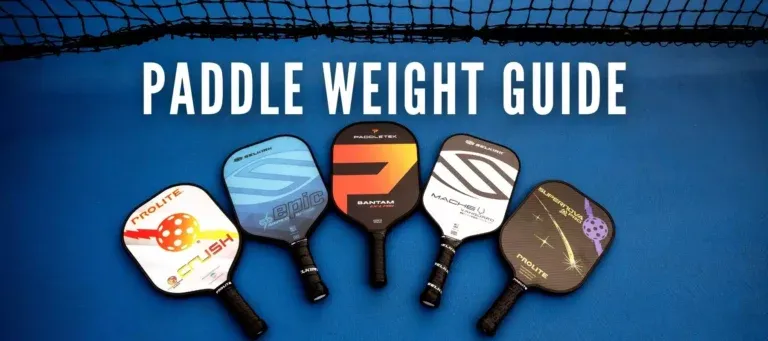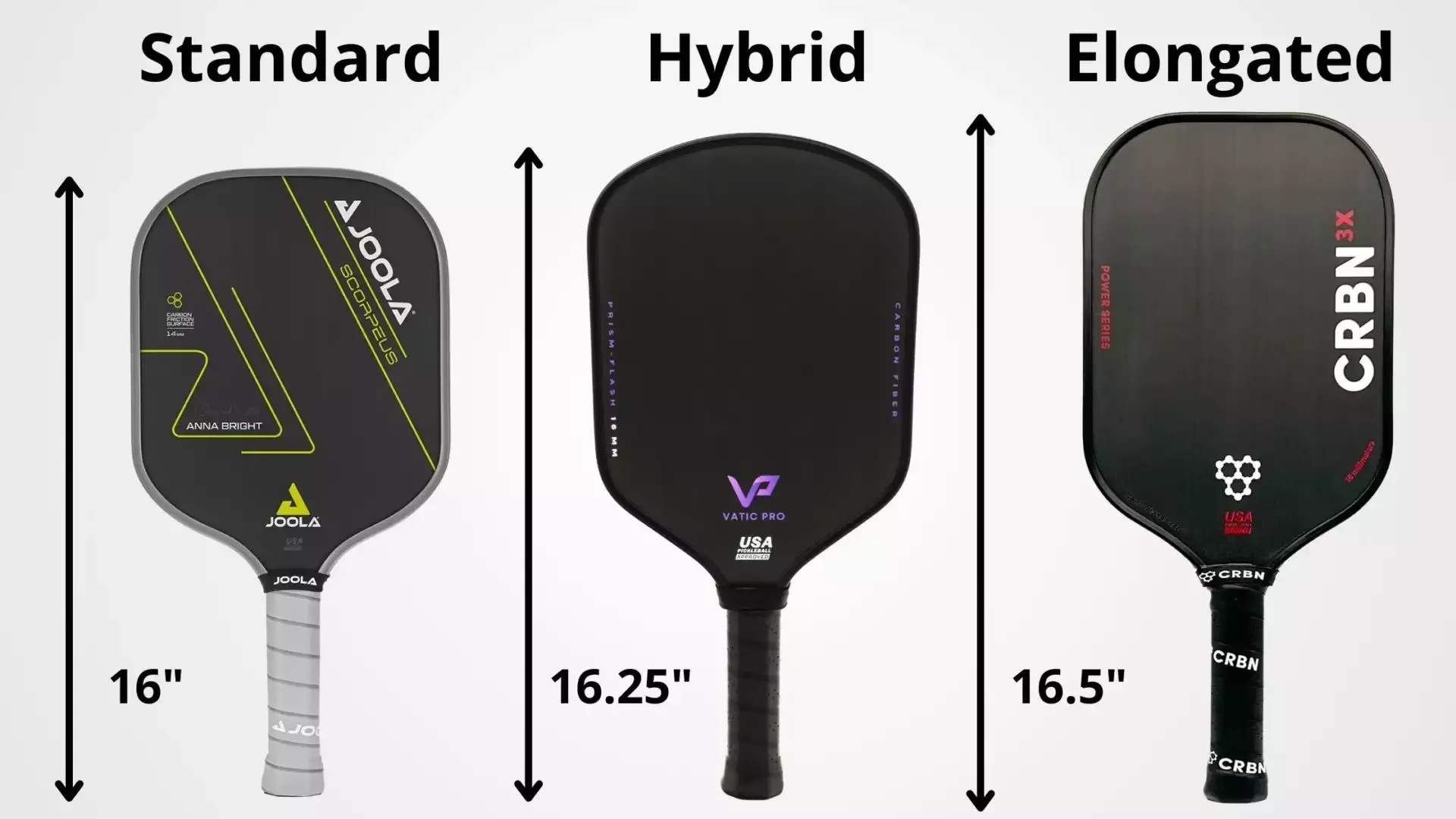Key factors to consider when choosing paddles for 4.0 players
When selecting a pickleball paddle, several key features must be taken into account, particularly for players at the 4.0 level who require equipment that can keep up with their evolving game. These factors include material, grip size, and weight. Understanding these aspects ensures that a player can find a paddle that not only enhances performance but also aligns with individual playing styles.
Paddle material matters for 4.0 players
The material of a pickleball paddle is crucial for determining its performance capabilities. Paddle materials can range from wood, to composite, to graphite. While wood paddles are generally suitable for beginners due to their affordability, 4.0 players typically favor composite or graphite paddles for their enhanced features.
- Composite paddles often strike a balance between control and power, making them versatile options for players who employ a range of strategies. The use of advanced materials allows for better responsiveness and durability.
- Graphite paddles, on the other hand, tend to be lightweight and offer significant power without sacrificing control. They often excel in producing spin, which is vital for advanced plays and engaging tactics on the court.

In conclusion, choosing between composite vs graphite materials often comes down to personal preference, playing style, and desired performance characteristics.
Grip size is essential for control and comfort
The correct grip size is paramount for control and comfort during play. An improper grip can lead to fatigue, decreased performance, and even injury over time. Grip sizes are generally standardized, with most paddles featuring a grip size around 4.25 inches. However, manufacturers often provide sizing guides to help players find their ideal fit.

An adequately fitting grip allows 4.0 players to maintain better control over their shots, particularly during intense matches where the stakes are high. If a player’s grip is too small, they may find themselves over-gripping, leading to premature fatigue. Conversely, a grip that is too large can reduce finger dexterity and impede shot accuracy. Therefore, it’s advisable for players to test different grips and consider customization options, such as overgrips, to achieve the most comfortable feel.
Weight affects performance: Maneuverability vs. stability
The weight of a paddle significantly influences both maneuverability and stability. Paddles generally fall into categories of lightweight, midweight, and heavier options. For players rated 4.0, midweight paddles (approximately 7.5 to 8.5 ounces) tend to offer the best balance.
- Lightweight paddles (around 7-8 ounces) permit quicker reactions, allowing players to respond swiftly to fast-paced exchanges.
- Heavier paddles (8-9 ounces) can provide more power and stability, excellent for players who favor aggressive play styles.

Testing different weights is essential; a paddle that feels comfortable during practice might perform differently under game pressure. Furthermore, players must consider their stamina, as using a heavier paddle can lead to quicker fatigue during extended matches.
Paddle shape: Sweet spot and maneuverability
The shape of a pickleball paddle affects its sweet spot and overall maneuverability. A wider paddle face often provides a larger sweet spot, translating to greater consistency and performance during hits. However, narrower designs might allow for increased maneuverability, which can be essential for quick exchanges at the net.

4.0 players should consider their playing style when deciding on paddle shape. Those who utilize strategic shots and rely on accuracy might prefer paddles with a larger sweet spot. In contrast, players who favor aggressive returns and fast plays might lean towards narrower designs designed for quick adjustments. Finding the right balance between these factors can elevate a player's game significantly.
Conclusion
Selecting the right paddle is paramount for elevating your game as a 4.0 player. This decision should reflect individual playing style, comfort, and performance capabilities. With so many paddles available, understanding the distinctions in materials, grip sizes, and weights can significantly inform your selection process. By exploring top recommendations and testing multiple options, players can find a paddle that complements their skills. Ultimately, the best paddle will not only enhance play but also foster growth, enjoyment, and competitiveness on the court.
Frequently asked questions (FAQs) for 4.0 players
What is the importance of choosing the right pickleball paddle for 4.0 players?
Selecting the appropriate paddle plays a crucial role in a player's overall performance, especially at the advanced level. The right paddle can enhance control, power, and comfort, allowing players to execute their strategies effectively.
What materials are commonly used in pickleball paddles?
Common paddle materials include wood, composite, and graphite. Each material offers different advantages, with composite and graphite being preferred by advanced players due to their performance characteristics.
How does grip size affect pickleball performance?
Grip size impacts comfort and control during play. An incorrectly sized grip can lead to fatigue and affect shot accuracy, while a properly fitting grip enhances performance by enabling better maneuverability.
What are some recommended paddles for 4.0 players?
Some of the top recommendations include the Ben Johns Hyperion Pro CFS, Paddletek Tempest Wave v3, and Selkirk Amped Epic. Each paddle provides unique benefits tailored to the needs of advanced players.
How do weight and balance influence paddle choice?
Weight affects maneuverability and stability. Lighter paddles allow for quicker reactions, while heavier paddles provide more power and control. Finding the right balance greatly depends on a player's style and stamina.


















